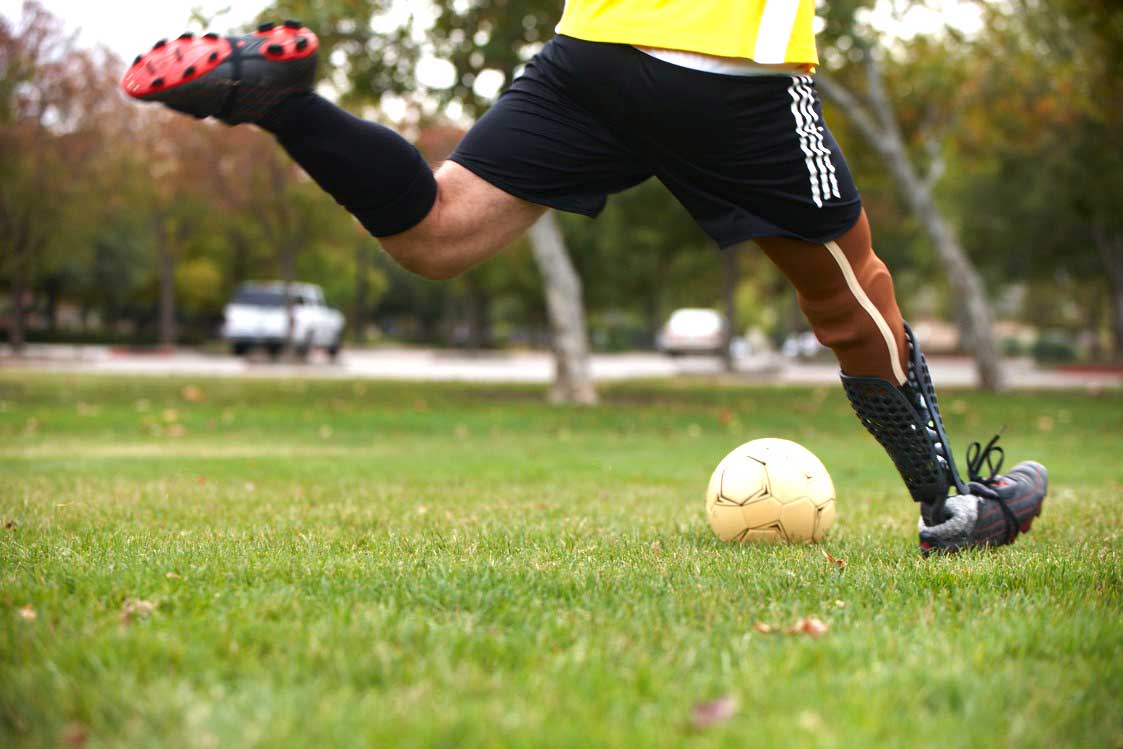One increasingly popular design application is 3D printing. Additive manufacturing or 3D printing is the process of making a three-dimensional solid object from a digital model. 3D printing is achieved using an additive process where successive layers of material are laid down in different shapes to create an overall object. This process makes 3D printing distinct from other machining techniques that rely on the removal of material by subtractive processes such as cutting or drilling. As a result, this technology has grown in popularity since the start of the 21st century and has led to a manufacturing revolution. 3D printing is now used in a wide range of fields such as industrial design, architecture, engineering and construction, medical industries, and many others. Bespoke Innovations is one example of a company that uses 3D printing to fulfill their mission.
Bespoke Innovations is part of a movement towards individualized medicine.They create personalized Fairings to bring more humanity to people who have congenital or traumatic limb loss. They do this using 3D technology. Scott Summit the founder of Bespoke Innovations said, “Our efforts have been to connect additive manufacturing solutions to the people who stand to benefit from them the most. We look forward to new innovations coming from 3D Systems to further enable these developments.” The company is using advances in 3D printing to create prosthetic limb casings wrapped in embroidered leather, shimmering metal or whatever else someone might want. Summit stressed, “I wanted to create a leg that had a level of humanity. It’s unfortunate that people have had a product that’s such a major part of their lives that was so under-designed.” Bespoke Fairings are specialized coverings that surround an existing prosthetic leg, accurately recreating the body form through a process that uses three-dimensional scanning to capture the unique leg shape. These Fairings not only return the lost contour, they invite an expression of personality and individuality that has never before been possible.
 Fairings are made with the help of 3D Technology. First an image-based 3D scanning technology is used to capture images of both the “sound side” leg and the prosthetic leg. A 3D computer model results, and a mirrored “sound side” leg is then superimposed over the prosthetic leg. This way, the users are given their body symmetry back, at least to the greatest possible extent. In the case of Bilateral amputees a “stand-in” close to their original or preferred shape can be used. Then the customization of the Fairing is directed by the user, allowing them to completely control the personalization process. After the design is complete the Fairing can then be printed. 3D printing has allowed Bespoke Innovations to build something based on the unique shape of the user, modify it with their designs, and then turn it into something physical that can be worn. The resulting products are flexible, durable, and lightweight. The entire process can simply be summed up as scan, design, and print procedure (click on the links to view videos of each process). Overall, additive manufacturing or 3D printing has led to many innovative applications, such as the Bespoke Fairing.
Fairings are made with the help of 3D Technology. First an image-based 3D scanning technology is used to capture images of both the “sound side” leg and the prosthetic leg. A 3D computer model results, and a mirrored “sound side” leg is then superimposed over the prosthetic leg. This way, the users are given their body symmetry back, at least to the greatest possible extent. In the case of Bilateral amputees a “stand-in” close to their original or preferred shape can be used. Then the customization of the Fairing is directed by the user, allowing them to completely control the personalization process. After the design is complete the Fairing can then be printed. 3D printing has allowed Bespoke Innovations to build something based on the unique shape of the user, modify it with their designs, and then turn it into something physical that can be worn. The resulting products are flexible, durable, and lightweight. The entire process can simply be summed up as scan, design, and print procedure (click on the links to view videos of each process). Overall, additive manufacturing or 3D printing has led to many innovative applications, such as the Bespoke Fairing.


I dugg some of you post as I cerebrated they were handy very helpful
I like this web blog so much, saved to favorites. “Respect for the fragility and importance of an individual life is still the mark of an educated man.” by Norman Cousins.
Very informative. Well written, well researched. This article should make folks aware of the importance regarding tooth health.
Good site! I truly love how it is simple on my eyes and the data are well written. I’m wondering how I could be notified when a new post has been made. I’ve subscribed to your RSS which must do the trick! Have a great day!
What a stuff of un-ambiguity and preserveness of valuable know-how concerning unpredicted emotions.
You have made your point quite nicely!.
v. good.
you can also scan redesign and print if you start with a designed part.
scanning is best for objects not designed in CAD as with anything in nature
grade 100